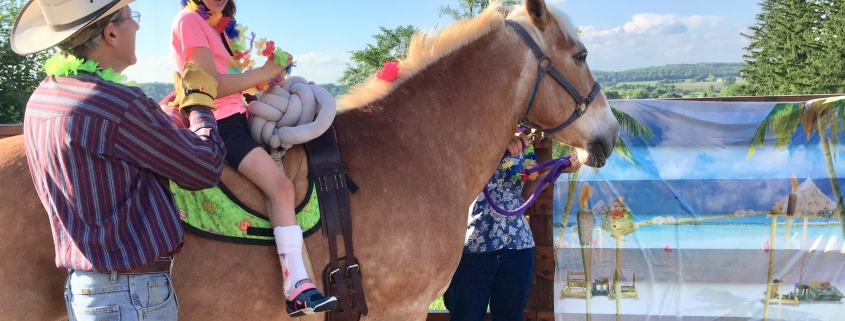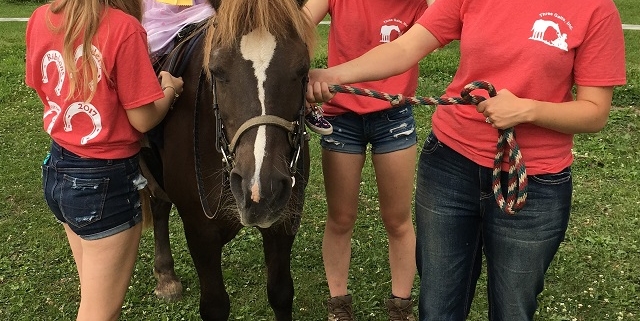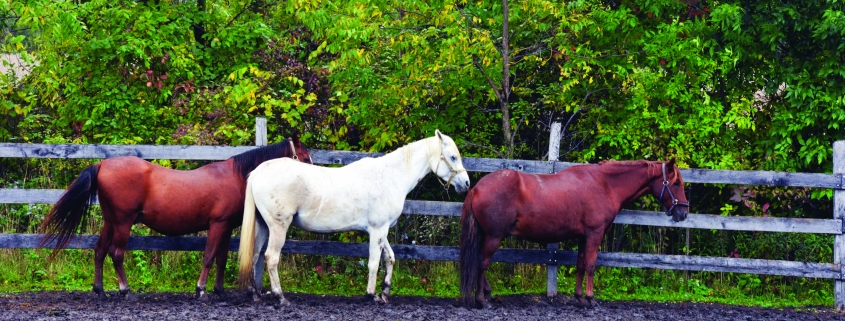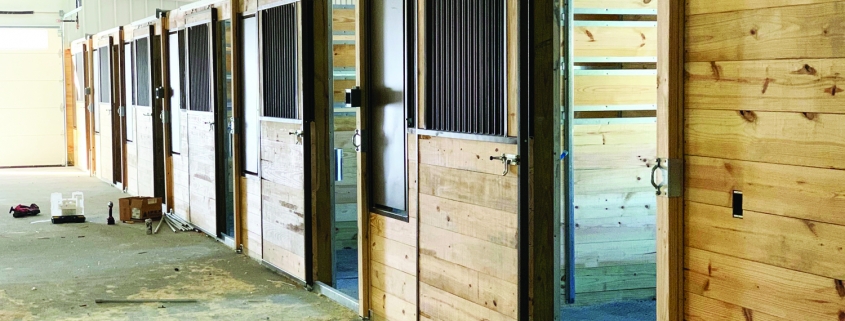BY JESSICA PAIRRETT, COPY EDITOR
Who among us doesn’t think our precious pups are smart? Well, okay, maybe not all of us do. While our dogs are smart in their own ways, not every pooch out there is born to earn an A on every task he or she is asked to do. But some dogs are simply smarter, right?
There’s no cut-and-dry answer to that. In looking at a dog’s intellect, we need to take a step back and consider just how is a dog’s intelligence determined. Is it by the number of tricks he does or the number of words he knows? What about if your dog is savvy out on the agility course? That’s not a feat all dogs are built to master. Then there are dog breeds we may consider highly intelligent war heroes, those who put their lives on the line and display bravery as they sniff out dangerous battlefields. And we cannot forget to include how well dogs can pick up on our emotions, often referred to in the human workplace as emotional intelligence. Let’s take a look at how dogs have varying degrees of intellectual and emotional intelligence.
Intelligence by Breed
So who is the expert on this issue? One of the places we often turn to is the American Kennel Club (AKC). As one of the authorities on all things dog, would it surprise you to learn that the AKC currently does not have a list of so-called smart breeds? Wisely, the AKC takes the stance that dogs are individuals, and to answer the intelligence question, we need to look at breeds and how they are classified. For example, working breeds have instincts and natural abilities that allow them to quickly perform jobs while other breeds are highly driven to please their people.
In short, the AKC views a dog’s intelligence based on breed, training and natural traits. Clear as mud, right? We can thankfully refer to the work of famed canine psychologist Stanley Coren, who had once educated us about different types of intelligence (see sidebar). He has provided us with one metric—working intelligence—with which to compare our dog’s smarts to others.
In Coren’s book “The Intelligence of Dogs,” he took a dive into the working intelligence of dog breeds. His research included lengthy surveys from about 200 dog obedience judges. Numerous breeds were rated on how well they obeyed commands and how quickly they learned new tricks. Those deemed the brightest breeds were the dogs that could obey a command 95 percent of the time and learn a command in five or fewer tries. And then, ta-da! The 10 reportedly smartest dog breeds list was born.
Top 10 in Working Intelligence
1) Border Collie: The quintessential agility dog, Border Collies are full of energy and smarts. Also recognized as a herding dog, this breed is a true workaholic and an athlete who also loves to cuddle with its people.
You might be familiar with the famous Chaser, a Border Collie who knew more than 1,000 words. Chaser’s person, John Pilley, trained her to learn and retain words much greater than “ball” and “toy,” said Karen B. London, PhD, a certified applied animal behaviorist and certified professional dog trainer. Chaser could even distinguish between nouns and verbs! Pilley remained modest about Chaser’s depth of knowledge, though. He maintained that other dogs could also learn just as Chaser did, that is, as long as other dogs were taught like Chaser: sometimes many hours a day and in a methodical and extensive manner that also included fun and play.
2) Poodle: How does this froufrou dog come in at second place? It’s easy! The Poodle (all breed sizes) is a friendly, active breed with a reputation as one of the most trainable out there. Regular exercising and training are musts to keep their extremely intelligent brains busy and out of any sassy behaviors. For these reasons, Poodles also make great hunting buddies helping you track and retrieve.
3) German Shepherd: All hail the police (and military) hero! The list of these brave dogs in history is long. With a strong work ethic, they require a job to do so they can burn off energy. This is a loyal friend of the family and a wonderful guard dog. Their affection and intellect also serves them well in roles as guide dogs or in other forms of service to their humans.
4) Golden Retriever: The sweet, lovable Golden can have impeccable manners with help from your obedience training and socialization with other pups and people. Goldens love to be active, whether it’s swimming, running, fetching, hunting or hiking with his family. You’ve likely heard of Goldens doing search-and-rescue or other service work.
5) Doberman Pinscher: Hailing from Germany, these brave dogs are proven guards. But their working intelligence also makes them ideal therapy, rescue, military and police dogs. The Dobie’s strength, speed and endurance has also led to their solid reputation as protectors.
6) Shetland Sheepdog: Having intelligence with a sense of humor, Shelties have an abundance of energy that’s made for a long history of herding and keeping watch over its flock and family. They also are very affectionate and playful, enjoying playtime with children and learning new tricks.
7) Labrador Retriever: There’s a reason Labs have topped the list of lovable dogs. If you have one in your home, you know their affectionate, playful natures are top Lab qualities. The breed is also an active one that makes for a great running companion. Being gentle, people-pleasing and easy to train also make the breed ideal for search and rescue and other service work.
8) Papillon: The smallest breed on the list is the butterfly dog, nicknamed for their unique ear shape. These intelligent dogs are as beautiful as they are happy and friendly. While small in stature, the Papillon is fast and quite the little athlete up for whatever training you’re ready to offer.
9) Rottweiler: Solidly built, Rotties have made excellent working dogs since their Germany origins. This herding breed also falls into the military and police dog bucket. Rotties, devoted companions that they are, are great service and therapy dogs. And they take on the obedience circuit, too!
10) Australian Cattle Dog: This working dog of Blue Heeler origin is full of energy—physical and mental! ACD parents should have energy to expend as this breed needs to work, whether it’s in agility, herding, tracking or general obedience.
So, there you have it: the top 10 smartest breeds as measured by working intelligence. But don’t forget: Breed isn’t the only factor influencing intelligence. You also have to consider their personality traits and the amount and type of training you’ve done together.
My Dog Didn’t Make the List!
Worried your dog’s smarts might not be up to par? Don’t be! First, remember that this data was gathered from obedience judges, which could have been subjective. Ever had a bad experience with a certain breed of dog? Think of your bias (good or bad) around that particular breed, and recognize that is your opinion. And that’s perfectly okay!
But if you want to bond with your dog while upping their working intelligence, Petfinder.com offers some great tips.
First, remember that all dogs are trainable. Find what motivates him and watch him excel. Second, make sure to use positive reinforcements whether that includes food, lots of pets, a short game of fetch, bubbles to pop or another activity that is super motivating.
Build your dog’s intelligence through interactive games, sports and agility, food puzzles or snuffle mats. Remember that motivation works wonders. Remember that smarter breeds require more of something (stimulation, activity or attention) that keeps their minds sharp and their bodies physically active, according to Petfinder.com. Bond through regular walks, other exercise and play sessions and behavior training.
Finally, make sure that no matter what you do, get up and interact with your dog. Just as a child learns and grows as their mom or dad spends quality time with them, so dogs do with you. And besides, do you really need a specific reason to spend time with your furry companions?
Intelligence in Many Forms
We’ve talked a lot about a dog’s working intelligence. But what if one of these dog breeds isn’t for you? Remember that all dogs are individuals and there are so many kinds of intelligence that can be paired with your dog’s style. Find the one that best suits her or him. After all, the best kind of dog is the one perfectly fitting for your lifestyle.
I remember how I once compared my now-senior dog’s intelligence to that of his prior packmate’s. Buddy was a rule-breaker, not a rule-follower, and truly would not have ranked high on working intelligence. Lucky, however, ranks way up there in interpersonal intelligence. His communication skills often amaze me, including his many appropriately timed sighs (huffs)—even when I don’t think he’s listening! Lucky’s other pack member, Taco, ranks up there in adaptive intelligence. He’s a sneaky one for sure!
No matter the breed of dog we keep, we should all take the time to figure out our dog’s true intellect. Find out what makes your dog happy and feed that. Let them explore their interests, said London. And as Pilley believed, you’ll find better communication—and happiness—with your dog because of it.
What do you think? What type of intelligence does your dog show?
Are we missing a type of intelligence your dog displays?
Let us know at our Facebook page!
BY MICHELLE SEROCKI, FREELANCER
What a strange time we’re living in. Imagine how strange your pets must think it is too. They feel your unsettled energy. If their routine has been upended, they’re likely feeling unsettled too. It’s been a long end to winter with even more isolation than our Wisconsin hibernation typically includes. Spring brings new hope with rising temperatures, buds sprouting and the pandemic on the decline. Experts say that fresh air is crucial to sustain good mental health, and this applies to our dogs as well. But with people flocking to limited public outdoor outlets, it can seem like there’s nowhere safe to go with your favorite Fido.
Pit Bull Advocates of America (PBAOA) has Southeastern Wisconsin’s only private dog park open year-round. In exchange for a modest donation, the Dog Days program allows pet parents the opportunity to reserve over an acre of fenced-in yard space for their dog to play, explore and relax in a completely private and safe environment. All dogs benefit from a change in scenery, new smells and fun exploration. Relax and bond with your dog, play fetch, work on training or tackle the agility course. Watch your dog light up and be free at the Rescue Retreat.
When the Rescue Retreat became a reality for PBAOA in 2016, they had no idea it held so many unknown possibilities. The nonprofit was ultra-focused on programs they were already running and excited to have the new location to expand in. As volunteers sat in the breathtaking and secure space watching their rescue dogs run freely, explore vigorously and relax effortlessly, the concept of Dog Days was born. A vision for dogs that had nowhere to freely and safely explore the world… until now. A vision of dog play dates and parties. A vision of dogs doing what they should be free to do best. Just. Be. Dogs.
There are no unknown humans or animals to be concerned with during your scheduled play time. It’s your choice if anyone joins you and who those people and/or pets will be. The folks at the Rescue Retreat have a special spot in their hearts for reactive rovers, and Dog Days is an ideal offering for animals that can’t be around other dogs and/or people. No judgement. No scrutiny. All 30-minute play times must be scheduled. No walk-ins will be accommodated. All breeds are always welcome.
Your private play session will not involve any unfamiliar dogs or people. There are no volunteers present. You will need to monitor your own scheduled play time. This means you must arrive and leave on time. Others are relying on you to make this safe for their dogs.
Scheduled play time is always in 30-minute increments. If you arrive 15 minutes late for a 30-minute play session, you cannot stay an extra 15 minutes. Play sessions are scheduled and are often booked up. Please be on time, and be kind to others using this service for their dogs by leaving at your scheduled end time.
If you arrive early and there’s still another dog playing, you must stay in your car with your dog until they exit the yard and are back in their car. As mentioned, many of the dogs that have used the private park for years do so because they can’t be around other dogs and/or humans. It’s so important that players are respectful of other players limitations and challenges.
During the pandemic, the folks at the Rescue Retreat have taken extra precautions to remain open while not contributing to the spread of COVID-19. We have hand sanitizer at the gate and Clorox wipes onsite. We encourage all players to wash their hands as soon as possible once they’ve left.
Treat yourself and your dog to some safe, socially distant outside time at the Rescue Retreat. You can find more information on the Dog Days program as well as the schedule on the PBAOA website: https://pitbulladvocates.org/owner-support/dog-days/
(column)
BY HEATHER GEHRKE, EXECUTIVE DIRECTOR, EBHS
March 11, 2020, is a date I will always remember. As many national organizations temporarily or indefinitely suspended operations, I found myself wondering what was happening to our world. The next several days and weeks felt like months as our team at Elmbrook Humane Society tried to make sense of what COVID-19 meant for us as a business and all those we serve throughout our community.
Thankfully and rightfully, the State of Wisconsin deemed humane societies as an essential service. Like most businesses, we needed to find a way to operate and continue to serve both the animals and people in our community. We moved to an appointment-based operation, providing support by phone, email and virtual meetings and continued to respond to animal emergencies in our community. We are still continuing to adapt our services, programs and business operations to function safely while still being a community resource for animal needs.
Some critical services have been strongly encouraged to be placed on hold. These are services I believe our industry would never before have imagined halting. For example, given it is next to impossible to achieve the recommended social distancing, spay and neuter services have stopped except for emergencies. Transport has been discouraged due to the amount of contact between staff and volunteers facilitating transport and the potential of spreading COVID-19 amongst states. With both services being essential to saving lives, it is exciting to share that work is being done to create guidelines to resume both.
Visits to veterinarians have moved to curbside with your pet being separated from you. From a human health perspective, we now have to think about how to support our pets through this. Animal welfare is as much about connecting with people and providing education as it is caring and advocating for animals. All community outreach and special events typically done in-person or in group settings have been affected. Spring camps for youth, READ to Me sessions and humane education programs in schools, dog-related training and seminars have had to be canceled. Galas, run/walks, bowl-a-thons and more have had to be rescheduled or canceled. Everyday life as we know it has changed, but there are many good things happening.
We have seen increased community involvement for fostering and adopting. Supporters have been making sure we have the supplies needed to remain safe and healthy to be able to continue providing the best care possible for animals in need. We have witnessed people supporting virtual fundraising and programming. We have learned that operating by appointment allows us to provide more personalized service and develop even stronger relationships with foster volunteers, adopters and our donors. We have learned new ways in which kind, compassionate individuals can continue to provide support to not only Elmbrook Humane Society but to many non-profit organizations.
The world of animal welfare has changed and inevitably will continue to change. COVID-19 has presented many challenges, but it has also caused our industry to pause and rethink how we serve and care for animals and people. As a result, in the weeks and months to come, our organization, along with other humane societies and rescue groups, will be stronger through innovation and working together.
As the saying goes, we are all in this together!
(column)
COLLECTED, WRITTEN & EDITED
By NASTASSIA PUTZ, PAULA MACIOLEK & JESSICA PAIRRETT
Whether you have a child with behavior problems, a teenager with depression or anxiety, or a family member with physical health issues, equine therapy or hippotherapy can benefit anyone suffering physical, mental or emotional ailments.
The earliest known mention of equine therapy can be traced back to roughly 400 B.C. and was discovered in ancient writings from Greek physician Hippocrates.
It wasn’t until 1952 when Liz Hartel from Denmark won a silver medal in Grand Prix dressage at the Helsinki Olympic Games that it entered the limelight. Hartel found that using horses was a great way to strengthen her lower body, especially after she had developed some paralysis in her legs caused by polio. Hartel’s success woke up the medical and equine communities in Europe, and therapeutic riding programs began emerging.
Talk then traveled from Europe to the U.S. and Canada, giving like-minded individuals the initiative to start therapeutic riding centers in North America. In 1969, the North American Riding for the Handicapped Association (NARHA) was started and eventually became known as PATH International, which includes dozens of different equine-assisted activities that benefit people with special needs.
This brilliant and organic therapy can now be found locally in most areas and has helped shape the worlds of many. According to PATH International’s 2017 Fact Sheet, autism spectrum disorder is the number one most served population under the special needs umbrella. And ages 6 to 18 seem to be the majority of the participants in equine therapy. Take a look at some of the local ones here in Wisconsin.
BY PAULA MACIOLEK, COPY EDITOR
Just 45 minutes north of Madison, Wis., a non-profit organization called Baraboo River Equine-Assisted Therapies, Inc., also known as B.R.E.A.THE, Inc., offers equine-assisted activities and therapy or EAAT for people ages 4 and up who have special needs.
B.R.E.A.THE was started in 2016 by Chris Singer and her husband when they came back to their Midwest roots after living on their southern California horse ranch. “We had five horses when we came here,” Chris explained, “and were looking for a way to give back to the community and benefit people—more than just us.”
Riders of a wide variety of physical and other disabilities can participate in learning horsemanship, both inside and outside of the barn, and get great exercise. “We have a lot of riders with autism, physical disabilities and learning disabilities, PTSD, spina bifida, Down syndrome.” Riders do not control the horse but rather helpers on the ground do. For the most part, there isn’t any kind of special equipment needed in sessions. “It depends on the rider, of course. We’ll use a traditional saddle or bareback pad, and if they’re really unable to support themselves, they have a side walker that walks on each side of them. Ninety nine percent of our riders can sit themselves.”
While participants might be excluded from sports at school because of physical or cognitive limitations, they can enjoy the inclusion that EAAT offers. “You’re not going to find them playing soccer, but we can put them on a horse and teach them how to control a 1200-lb animal, and they’re learning something and building core strength and confidence. That’s the positive reinforcement that sports have that [our riders] are able to participate in.”
Volunteers are an important part of the efforts, and Singer is always looking for people who have weekday and evening availability Monday through Friday. Help with special events and fundraisers is needed, too.
Of course, the lessons cannot happen without the horses. They need to have a special temperament that Singer describes as “pretty bomb-proof.” She explained, “they have a lot of input they’re dealing with during a lesson, so it can be pretty stressful. They have someone on their back who doesn’t really know what they’re doing, and a lot of times they can be off-balance, so the horse is working hard to keep that person on their back.”
Singer currently has six horses, and she needs three more to join the ranch for summer sessions. “To go out on the open market, it can cost $2000 to $10000 to purchase a horse. We are lucky if we get someone to donate their horse.” It’s challenging to find a horse that is of the right temperament, has the ability to do certain things such as trotting, while not having too many cost-prohibitive medical needs.
People are referred to B.R.E.A.THE via school counselors, special education teachers, parents who network with each other and share with other parents, as well as students on field trips at the ranch who go home and tell their parents. Even chiropractors, physical therapists and county health specialists spread the word about the benefits of EAAT at B.R.E.A.THE.
To get involved at B.R.E.A.THE as a rider, a volunteer or to make a donation, visit barabooriverequineassistedtherapies.org or call 608-504-2299.
BY PAULA MACIOLEK, COPY EDITOR
Three Gaits, named for the three movements of a horse—walk, trot and canter—is a nonprofit organization that provides equine-assisted activities and therapy (EAAT) for people with physical, emotional and intellectual challenges. Located just south of Madison in Stoughton, it began in 1983 under the leadership of Gail Brown and Lorrie Renker with just one horse and eight riders and “a love for horses and an interest in providing equine-assisted activities for individuals with disabilities in Dane County,” describes Mary Ann Roth, interim executive director.
Clients range from age 4 to 70 and may have physical, emotional and intellectual challenges or disabilities including, but not limited to, autism, ADD/ADHD and Down syndrome.
Three Gaits offers therapeutic horseback riding led by instructors who are certified by PATH International. Services include group sessions that are mounted and unmounted education in which riding skills with a therapeutic value are taught. They also offer both occupational therapy and hippotherapy. Roth explains that occupational therapy in this setting “utilizes the movement of the horse as the treatment tool.” Hippotherapy is provided by a licensed occupational therapist and is done in a one-on-one setting. Sessions run three per year in 12-week sessions.
Roth lists the benefits riders receive as a “gain in physical strength, balance, increased self-esteem, following directions, learning a new skill, socialization with classmates, [and] volunteers and staff developing a special bond with their horse.”
Three Gaits enjoys the efforts of approximately 350 volunteers who are involved with office work, care of the horses and fundraising to name just a few. They also are involved with hands-on work in the lessons supporting the riders by walking alongside and leading the horses. Roth shared that “…they come to us with a wide range of skills to offer, and what skills they do not have, we provide training. We are always looking for more volunteers.”
The work of the EAAT provided at the ranch is supported from United Way and grants from foundations. Private donors are a vital source of monetary support, and Three Gaits relies heavily upon them. Fundraising events are also held through yearly events that include several horse shows, a student horse show, a tomato plant sale and a major event taking place in the fall as well as a continuing GoFundMe effort to help with covering the cost of hay, which Roth reports as having “…almost tripled in the last year with unpredictable weather and such a wet growing season.”
The horses in their barn range in terms of breed and Roth describes them as having a calm disposition, gentle, sound, in good health, experienced in a variety of riding disciplines. Often, they will add to their barn by people donating horses. Sometimes, children have a horse while growing up and when they leave for college, they donate the horse to Three Gaits.
People find out about Three Gaits by word of mouth, from doctors and therapists, referring participants as well as state case workers.
To find out more about the EAAT programs, visit 3gaits.org or call 608-877-9086.
BY JESSICA PAIRRETT, COPY EDITOR
Snuggles and kisses, gentle nuzzles and hilarious antics. These are all attributes we love about spending time with our dogs. We’ll include the feline variety in there as well. But what about the quality time spent with horses? If you haven’t had the opportunity to do so yet, you’re sure missing out.
Located in Franksville, Stepping Stone Farms is one of those special places where you can meet a number of equally special horses. The nonprofit is a therapeutic facility that also rescues or receives donated horses. Lia Sader, founder of Stepping Stone Farms, says that horses have been her passion since she was a young girl. In Lia’s past life, she was a farrier working on horses’ shoes and hooves. But in 2004, her calling changed, and the farm was born.
Saving Those in Need
Stepping Stone Farms, while rescuing horses of any breed, keeps a focus on those who are older. Working with horses also included working with their owners, many of whom had the wrong breed of horse that did not meet their needs, Lia says. Sadly, Lia also met many owners who no longer wanted their horses because they could no longer be ridden or there was another unforseen circumstance.
Most of the horses that come to the farm are leaving bad situations. But that doesn’t necessarily mean that they have been intentionally neglected or did not receive good care. Sometimes, Lia says, the horse’s owner is doing the best he or she can to care for the animal, as can happen with dog rescue. One of the horses Stepping Stone Farms took in came from a situation in which its family just could not afford the food, and the horse was extremely malnourished. But this is where the beauty of rescue steps in to help the horses continue along their journey.
“The horses need to live their lives, have a job and do something,” Lia says. Just because a horse may be older or have a foot condition does not mean their life is over. This just means they’re ready to move on to that next chapter.
One rather particular fellow is 40-year-old Pony who Lia describes as a grumpy old man—but not all the time. He’ll keep to himself but knows how to be a friend, too. One visitor to the farm, a young girl, had poor social skills and had a hard time making friends. That is, until Pony followed the little girl around the show ring. “He taught her how to be a friend,” Lia marvels. This goes to show that age is nothing but a number!
A Therapeutic Mission
Saving animals, both large and small, may warm the hearts of some of us. Those same animals can also provide therapeutic benefits. Stepping Stone Farms offers therapeutic riding but also programming for children and adults who have mental health issues. Equine-assisted coaching is one way in which the horses are used for therapy.
Lia is a huge proponent of Eagala certification, in which an equine specialist and a mental health clinician work as a team along with a client and a horse. The Eagala model is ground-based with no riding involved. This allows children and adults of all abilities to take part in the therapy. The group works inside an arena, and the horse and client can interact as they wish, which creates a deep connection and gives the client space for reflection.
Clients at Stepping Stone Farms will currently work alongside Lia and a chosen horse (she has an opening for a therapist!) to build self-efficacy, self-confidence, self-acceptance and self-discovery. While working with these giant, gentle beings, clients also build skills in communication, trust, assertiveness, healthy boundaries and impulse moderation. Equine therapy also helps in the reduction of anxiety and isolation.
Having experienced the benefits of equine therapy herself, Lia wants to share the same benefits with others. When Lia was 17, her mom passed away. Lia used to suffer from depression, and it was time spent with animals—horses in particular—that helped her heal.
Why Horses?
Horses may be large and powerful, but their size can help us take pause and reflect on times when we feel overwhelmed with large obstacles looming ahead of us. Plus, they are intelligent and especially sensitive to their environment. That includes reading our body language which they interpret and respond to accordingly. And, just like our beloved dogs, horses have their own personalities, moods and attitudes, too (remember Pony?).
Why not stop and check out Stepping Stone Farms yourself? During the last weekend of April, make sure to visit the farm’s free fundraising event “A Day of Horse Play.” The event is held rain or shine and will offer a good time whether or not you bring the kids!
Call (414) 379-2314 or visit steppingstonefarms.com for more info.
BY NASTASSIA PUTZ, PUBLISHER
Development of the MKE Urban Stables is well underway and will be completed sometime this spring. Located at 143 East Lincoln Avenue, the stables will be first and foremost a dual program to benefit Milwaukee youth and Veterans, while allowing the community to intermingle with police officers in a positive manner according to Kent Lovern, chief deputy district attorney of Milwaukee County.
Lovern is the board president for the stables and is excited to see the transformation that may come from officers and youths viewing the world through each other’s eyes. Ideally, these stables will help break down barriers between the two (often opposing) cultures and create a dialog in which both see the humanity in each other. He notes that youths will also be able to learn from the Veterans in the same capacity.
Ed Krishok, the vice president and treasurer of this project, says the facility, which will be a home for the MPD Mounted Patrol’s horses, will be ready sometime later this year for equine-assisted therapy, but a date has not yet been confirmed.
The MPD is partnering with the VA and Hamilton High School to make this therapeutic program possible according to Lovern. Hamilton High School is the largest Milwaukee public school with the largest number of special needs students. So students would benefit from a local facility geared towards helping them. And currently veterans have to travel to use a facility in Illinois for therapy.
Krishok would like to mention how grateful the stables are for its community partners who are responsible for bringing this “one-of-a-kind equine center and community gathering place to life.”
GOALS:
• Provide Equine Programs & Experiences That Keep Youth & Veterans Coming To MKE Urban Stables
• Improve Police and Community Relations by Helping to Build and Support a Human Connection Between Both
• Build a Culture & Appreciation of Service
• Establish MKE Urban Stables as a Multi-Cultural Gathering Place Reflective of Our City
For Book, Product & Article Review:
Email us for further instructions.
FOR DIRECT QUESTIONS:
Nastassia Putz, Publisher
(262) 337-1967
nputzfetchmag@gmail.com
FOR ADS/DISTRIBUTION:
Current Circulation: 10,000 to 13,000 copies per quarter, distributed to 300+ locations throughout Southeastern Wisconsin (Milwaukee, Madison, Racine/Kenosha, Green Bay).
Questions? Email us at info@fetchmag.com.
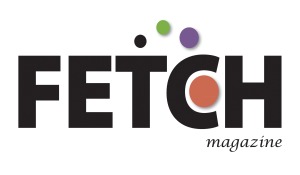
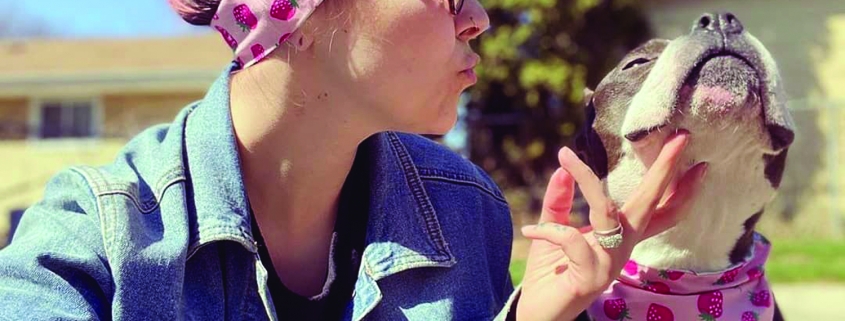


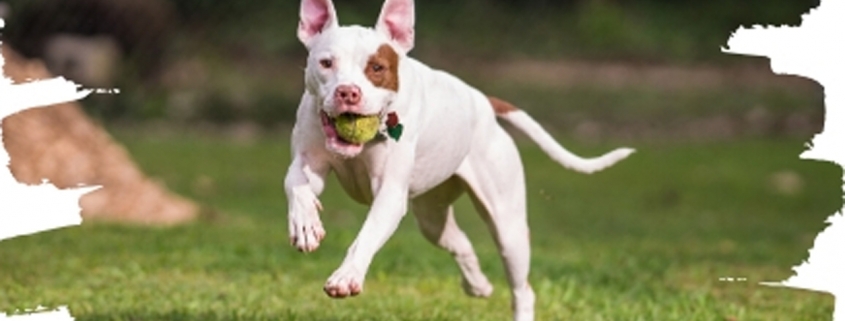

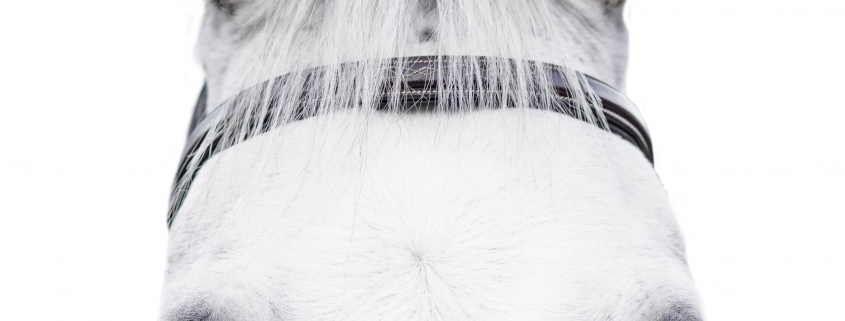 Copper Arrow Photography
Copper Arrow Photography